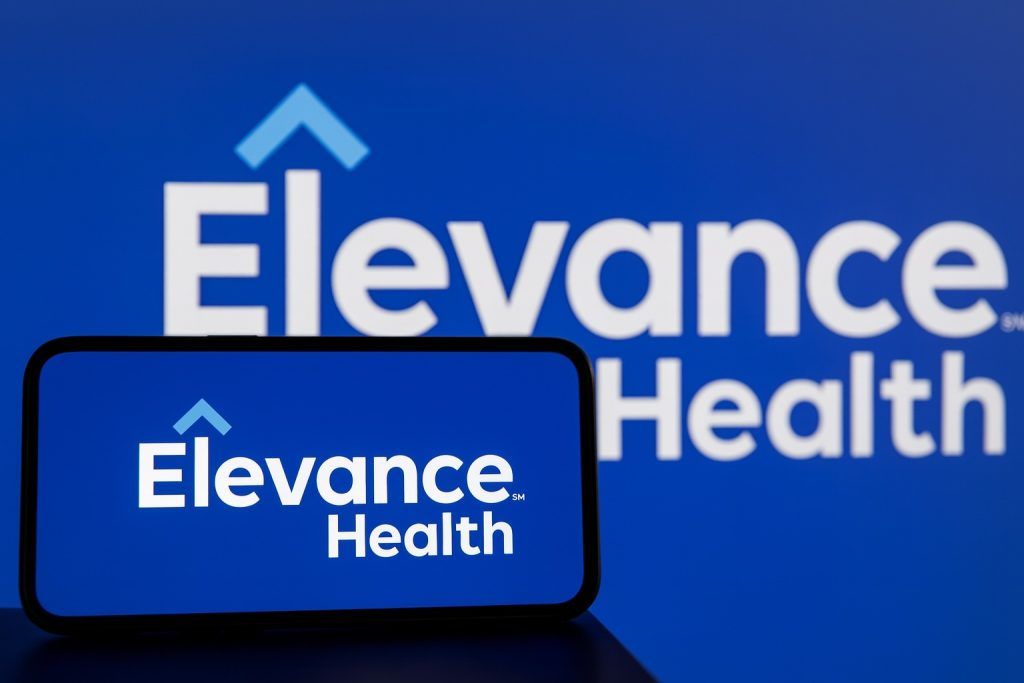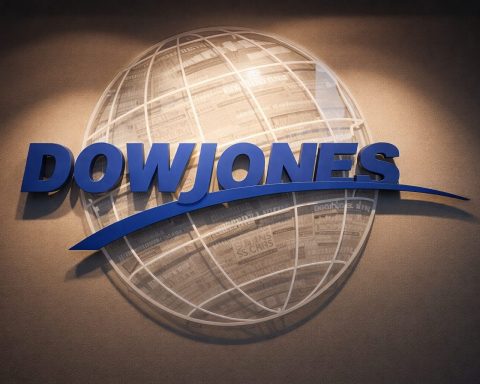- Stock Price & Recent Moves: Danaher’s stock (NYSE: DHR) trades around $208 per share as of October 21, 2025. The price is up roughly 8% in the past month and about 10% over the last quarter, reflecting renewed investor interest [1]. However, DHR remains down about 20% compared to a year ago [2], underscoring lingering long-term underperformance despite the recent rebound.
- Q3 2025 Earnings Beat: Danaher beat Wall Street expectations for the third quarter of 2025. Adjusted earnings came in at $1.89 per share, topping analyst estimates of $1.72, and revenue hit $6.05 billion (up ~4.5% year-over-year), slightly above the ~$6.0 billion forecast [3] [4]. CEO Rainer M. Blair said he was “encouraged” by the results, crediting strong execution, a rebound in the bioprocessing business, and better-than-expected demand for respiratory testing at Cepheid [5] [6].
- Soft Outlook Tempers Reaction: Despite the earnings beat, Danaher maintained its full-year 2025 profit guidance at $7.70–$7.80 EPS, which at the midpoint just narrowly misses analyst consensus (~$7.78) [7] [8]. The company expects only “low-single-digit” core revenue growth for the full year [9] [10]. This cautious outlook caused the stock to dip about 1% in pre-market trading on Oct. 21 [11] [12], as investors balanced the solid Q3 with the conservative guidance.
- Analyst Sentiment: Wall Street remains broadly bullish on Danaher. Approximately 17 out of 23 analysts rate DHR a “Buy” (the rest mostly “Hold”), and the stock’s average price target is about $245 – implying significant upside from current levels [13]. In recent weeks, Evercore ISI raised its target price from $226 to $245 and Robert W. Baird boosted its target to $236, both reiterating Outperform ratings [14]. While RBC Capital and Bank of America trimmed their targets (to $241 and $220 respectively), they maintained positive ratings (Outperform/Buy) as they see certain business areas stabilizing despite some lingering uncertainties [15].
- Recent Developments: Danaher has been actively investing in innovation and expansion. Its subsidiary Beckman Coulter Diagnostics recently launched a new Alzheimer’s biomarker test (the fully automated BD-Tau immunoassay), with another neurodegenerative disease test in the pipeline [16]. This move into cutting-edge diagnostics is seen as a strategic boost for the Life Sciences and diagnostics segment. The company also completed acquisitions like Abcam to strengthen its biotech tools portfolio [17]. Additionally, Danaher declared its regular quarterly dividend of $0.32 per share (yield ~0.6%), payable end of October, underlining management’s commitment to return value to shareholders [18].
- Sector & Economic Context: Danaher’s core markets have faced headwinds in 2025. Its Life Sciences unit has seen revenue declines amid weaker demand, a trend impacting many in the industry [19]. Nonetheless, new product launches and rising global investment in healthcare (e.g. precision medicine and biotech R&D) offer hope for reaccelerating growth [20]. The stock’s valuation is somewhat elevated – trading at over 40× earnings, higher than peers – which some analysts caution could cap near-term upside [21]. Broader market sentiment in late October is cautiously optimistic, as investors anticipate a potential Federal Reserve rate cut by month’s end [22], a move that could improve the backdrop for stocks like Danaher.
Danaher Stock Price and Recent Performance
Danaher’s shares have been on a steady climb in recent weeks, hovering around the $208 mark as of October 21, 2025. This puts the stock roughly back to early-year levels and marks a solid rebound from its summer lows. In fact, DHR has gained about 8% over the past month and 10% over the past quarter, outpacing many peers in the life sciences sector [23]. This rally suggests renewed investor interest in Danaher and its industry, possibly driven by anticipation of the Q3 earnings and optimism around new product developments.
Despite the recent uptick, it’s important to note that Danaher is still in the red on a year-over-year basis. The stock’s 12-month return is approximately –20%, reflecting broader challenges that hit life science tool companies following the pandemic boom [24]. A year ago, Danaher traded closer to $260, so today’s price near $208 indicates it has not yet regained those highs. Analysts point out that the long-term backdrop still needs improvement [25], but the current momentum has been encouraging. The question is whether DHR can sustain this uptrend or if it will consolidate as investors digest its outlook.
For context, Danaher’s volatility in the past year mirrored sector trends. Rising interest rates and a post-COVID slowdown in biotech funding dampened demand for lab equipment and diagnostics, which hit Danaher’s Life Sciences segment. The company’s life sciences unit saw revenue declines due to weak demand earlier in the year [26]. However, the recent 8–10% climb in the stock suggests sentiment is improving as the company adapts and new growth drivers emerge. Broader market conditions have also been a factor – in October, overall stock indexes have been relatively buoyant, aided by expectations that the Federal Reserve might ease up on interest rates soon [27]. Lower interest rates can particularly benefit growth-oriented companies like Danaher by improving financing conditions and investor appetite for equities.
Q3 Earnings Beat Expectations, While Guidance Stays Cautious
On October 21, Danaher delivered its third-quarter 2025 earnings report, and the results were stronger than Wall Street expected. Adjusted net earnings were $1.89 per share, comfortably ahead of the ~$1.72 consensus forecast [28]. This represents a double-digit percentage earnings surprise (over 10% above estimates) [29], indicating Danaher managed costs and operations better than anticipated. Revenue for Q3 reached $6.05 billion, up about 4.5% year-over-year, slightly above the $6.0 billion analysts predicted [30]. The sales growth, while modest, is a positive sign given concerns about a slowdown; it also marks an acceleration from the very low single-digit growth rates earlier in the year.
Danaher’s CEO Rainer M. Blair struck an upbeat tone about the quarter. “We are encouraged by our third quarter results… [our execution] enabled us to exceed our revenue, earnings and cash flow expectations,” Blair noted [31] [32]. He highlighted continued momentum in our bioprocessing business – a key Danaher segment that provides equipment and consumables for biotech drug production – as well as better-than-anticipated respiratory testing revenue at Cepheid (Danaher’s molecular diagnostics unit) [33] [34]. In other words, areas that had been under pressure are showing resilience: bioprocessing demand picked up (possibly as biotech customers increased activity), and Covid/flu test sales at Cepheid didn’t decline as much as feared. This operational beat also translated into strong cash generation; Danaher reported operating cash flow of $1.7 billion in Q3 (with $1.4 billion free cash flow), underscoring its ability to turn profits into cash [35] [36].
However, while the quarterly numbers impressed, investors reacted cautiously due to Danaher’s forward guidance. The company chose to maintain its full-year 2025 outlook rather than raise it, despite the Q3 beat. Management is still forecasting full-year adjusted earnings per share in the range of $7.70 to $7.80 [37]. The midpoint ($7.75) is essentially in line with or slightly below analysts’ prior consensus of ~$7.78 [38] [39]. In practical terms, Danaher did not increase its earnings guidance, which some in the market interpreted as a sign of lingering caution. Similarly, the company expects core sales (which exclude acquisitions and currency swings) to grow only in the low single digits for the full year [40] [41] – a tepid growth rate reflecting subdued demand in some segments.
Because of this conservative outlook, Danaher’s stock failed to pop on the earnings news. In pre-market trading after the results, DHR shares slipped about 1% [42] [43]. The slight dip suggests that while investors were pleased with the Q3 beat, they had already anticipated some improvement, and the lack of an upward revision to guidance gave them pause. Essentially, Danaher confirmed it is on track, but didn’t signal a dramatic acceleration ahead. Some analysts noted that the unchanged guidance might be prudence on management’s part – leaving room for an easy beat in Q4 – but it also reflects that certain headwinds persist, such as softness in academic lab spending or China market uncertainty.
It’s worth noting that Danaher’s profit margins remain healthy, which bodes well if growth picks up. The company’s gross profit margin is nearly 60% [44], providing a cushion of profitability even if sales slow. Danaher’s operating margin and cash flows are strong too, thanks to efficiency initiatives under the Danaher Business System. These strengths give management confidence to weather short-term challenges. However, investors will be watching Q4 closely to see if Danaher can hit the high end of its targets and whether 2026 might bring re-accelerating growth after a relatively slow 2025.
What Experts and Analysts Are Saying
Analyst commentary on DHR in the wake of earnings – and in recent weeks – has been generally optimistic, albeit with a few reservations. Many analysts highlight Danaher’s solid fundamentals and long-term growth drivers, even as they tweak near-term forecasts.
On the bullish side, Evercore ISI and Robert W. Baird both reiterated their positive stances on Danaher. Evercore recently raised its price target from $226 to $245 (about 18% above the current share price) and maintained an “Outperform” rating [45] [46]. Baird likewise nudged its target up to $236 with an Outperform view [47]. These increases suggest that some analysts see Danaher’s recent weakness as a buying opportunity, expecting the stock to climb as the company’s growth normalizes. Indeed, across Wall Street, Danaher enjoys a broad base of support: 17 out of 23 analysts tracked have a Buy or equivalent rating on the stock, with only 6 advising Hold and none recommending a sell, according to MarketBeat data [48]. The average analyst price target is around $245 per share [49], which signals confidence that DHR can regain much of the ground lost in the past year.
Danaher’s bullish thesis centers on its strong competitive position in life sciences and diagnostics, and its history of savvy acquisitions. “Analysts frame a bullish case around expansion from rising global healthcare investment, precision medicine, and AI-assisted diagnostics, which could drive margin expansion and higher EBITDA,” notes a TS2.tech market report [50]. In other words, trends like increased healthcare spending worldwide, new medical technologies, and the adoption of artificial intelligence in diagnostics all play into Danaher’s hands. The company’s diversified portfolio (ranging from lab instruments to genetic testing and water quality products) gives it exposure to many growing niches in the health and science fields. Danaher’s successful integration of acquisitions – exemplified by its $5.7 billion purchase of Abcam (a UK-based biotech reagents firm) in 2023 – is seen as bolstering its growth pipeline [51]. Additionally, Danaher’s financial health is solid; it carries a relatively low debt-to-equity ratio (~0.32) and hefty cash flows, which means it has flexibility to invest in R&D and further deals.
That said, not all analyst commentary is rosy. There have been some tempered views reflecting the current challenges. Notably, RBC Capital Markets in late September cut its DHR price target to $241 from $250 while keeping an Outperform rating [52]. RBC’s adjustment came as it re-evaluated the Life Sciences Tools and Diagnostics sector, which has seen a slowdown after the pandemic-driven highs. Similarly, Bank of America trimmed its target from $230 to $220 (still rating Danaher a Buy), citing mixed conditions – certain areas of Danaher’s business are “stabilizing or improving” but “some uncertainty remains,” according to the bank’s note [53]. And just before earnings, Redburn (Rothschild & Co) reportedly downgraded its target (from $245 down to $220) with a Neutral stance [54], indicating caution about how quickly Danaher can re-ignite growth. These more cautious views tend to focus on valuation and near-term headwinds: Danaher’s stock isn’t a bargain by traditional metrics, and there are concerns about areas like academic research spending and demand in China (a key market for lab tools) which have been soft this year.
Despite a few target cuts, the consensus remains that Danaher is a high-quality franchise navigating a temporary rough patch. “Despite price target reductions by top financial institutions like RBC and Bank of America, an Outperform and Buy rating cement investor sentiments to date,” observed StocksToTrade, noting that even those trimming targets haven’t turned bearish [55]. The overall message from experts is that Danaher’s long-term narrative – of steady, compound growth through innovation and acquisition – remains intact, even if 2025 is a year of transition. Many analysts are looking past the current slowdown, expecting earnings growth to pick up in 2026 once end-market demand (especially in biotech research) improves. In the meantime, they applaud Danaher’s moves to streamline operations and invest in future growth areas.
Recent Company News and Strategic Developments
Beyond the headline financial results, Danaher has made several notable moves in recent months that could shape its future performance. One of the most significant is the company’s push into new diagnostic technologies for healthcare, particularly in the high-need area of neurological diseases. In September, Danaher’s Beckman Coulter Diagnostics unit unveiled a fully automated BD-Tau immunoassay test, which is used for neurodegenerative disease research (BD-Tau is a biomarker related to Alzheimer’s disease) [56]. This pioneering test – with a companion Aβ-42 assay reportedly in the works – will aid researchers and clinicians in diagnosing and monitoring Alzheimer’s and other neurodegenerative conditions more precisely. Such innovations not only have commercial potential but also reinforce Danaher’s reputation in cutting-edge medical diagnostics. These advancements could “signal a potential upswing in stock trajectories, as their tests make inroads towards clinical breakthroughs,” according to analysts at StocksToTrade [57]. In simpler terms, success in developing new tests for large unmet medical needs could translate into a new growth driver (and revenue stream) for Danaher in the coming years.
In the realm of corporate development, Danaher has been active in M&A and partnerships to broaden its portfolio. The company’s acquisition of Abcam plc (completed in early 2024) is a prime example – Abcam is a leader in research antibodies and reagents, which complement Danaher’s life science tools segment. Integration of such acquisitions is part of Danaher’s strategy to “broaden horizons” and reinforce its Life Sciences segment [58]. While acquisitions can add to debt and integration risk, Danaher has a strong track record of extracting value from the companies it buys, thanks to the Danaher Business System playbook for process improvement. Investors often give Danaher credit for being a savvy consolidator in a fragmented industry.
On the shareholder returns front, Danaher continues to reward investors with a stable (if modest) dividend. In late September, the board declared the regular quarterly dividend of $0.32 per share [59], in line with prior payouts. The dividend is scheduled for distribution at the end of October 2025 to shareholders of record as of September 26 [60]. While the yield (around 0.6% annually) isn’t high, the consistent dividend underscores confidence in the company’s cash flow. It “lends shareholder affirmations and confidence in steady capital rewards,” as StocksToTrade noted [61]. Danaher’s dividend has grown incrementally over time, and though the company primarily focuses on reinvesting in growth, this payout provides a bit of income and signals financial stability.
Another noteworthy development is Danaher’s preparation to spin-off or separate certain units to unlock value (though the question is focusing on stock on Oct 21, 2025, it’s relevant to recall Danaher had announced plans to spin off its Environmental & Applied Solutions segment into a new company, Veralto, which actually occurred in late 2023). By 2025, Danaher is a more pure-play life sciences and diagnostics conglomerate. This strategic refocusing could help the market better appreciate Danaher’s core businesses and growth prospects. It’s part of why some analysts remain bullish – the streamlined Danaher post-spin-off is easier to understand and has higher margins and growth potential.
In company communications, management has emphasized that they are investing heavily in “breakthrough innovation, enhancing commercial execution, and driving productivity gains” across the business [62]. These efforts include ramping up R&D in promising areas like genomic medicine, cell therapy manufacturing, and advanced diagnostics, as well as improving sales execution in slower markets. If successful, such initiatives will fortify Danaher’s competitive moat and could accelerate growth once macro conditions improve.
Stock Forecast and Outlook
Looking ahead, the outlook for Danaher’s stock appears cautiously optimistic. While 2025 has been a year of re-calibration, many experts see better days in 2026 and beyond for this science and technology powerhouse. A key reason is that the fundamental growth drivers for Danaher’s businesses – global healthcare demand, the rise of precision medicine, and continuous innovation in research tools – are very much intact. As noted above, analysts on average peg Danaher’s fair value in the mid-$240s per share, significantly above the current price [63] [64]. This suggests upside potential if the company can execute on its plans.
Market sentiment: Danaher’s moderate 2025 performance hasn’t shaken the market’s long-term faith. The stock is widely held by institutional investors (over 79% of shares are owned by institutions) and it remains a core holding in the healthcare sector for many. The consensus “Moderate Buy” rating and $245 average target reflect expectations of a rebound. Some bullish analysts even view DHR as undervalued at current levels – for example, TS2.tech cited a narrative that pegs Danaher’s fair value around $244.50, implying the stock “could be undervalued” around $209 [65]. This thesis hinges on the idea that Danaher’s earnings will accelerate and justify a higher share price, especially if the life science cycle turns up.
Growth catalysts: On the horizon, a few catalysts could drive Danaher’s next leg up. First, a pickup in the biotech funding cycle (e.g. if interest rates fall or if new drug technologies like gene therapies attract more investment) would boost demand for Danaher’s bioprocessing equipment and lab products. Second, product innovations – such as the new diagnostics for neurodegenerative diseases or advanced lab instruments – can open up new revenue streams. Danaher’s pipeline of new offerings in diagnostics and life science research is expected to contribute meaningfully over the next couple of years. Third, strategic M&A remains a tool in Danaher’s arsenal; management hinted that they will continue to look for bolt-on acquisitions that enhance growth. Any such deals could be well-received if they strengthen Danaher’s position in high-growth areas (the way acquisitions in genomics or molecular diagnostics have in the past).
Risks and constraints: Despite the generally positive outlook, there are caveats. Danaher’s current stock valuation is not cheap – at about 44× trailing earnings and a PEG ratio near 3 [66], the stock prices in quite a bit of future growth. This elevated P/E (price-to-earnings) multiple, which is much higher than industry peers, could limit short-term upside if earnings growth doesn’t accelerate as hoped [67]. In other words, any disappointment in results or guidance might weigh heavily on the stock given its premium valuation. Additionally, Danaher has exposure to global economic and policy risks. About a quarter of its revenues come from Asia (with China a significant part of that). Ongoing geopolitical tensions or policy changes in China could impact its sales and supply chains – a factor analysts keep an eye on [68]. Moreover, if inflation remains sticky and interest rates stay higher for longer, it could dampen capital spending by Danaher’s customers (like hospitals, labs, and biotech firms), thereby slowing order growth.
Competitive landscape: Danaher operates in competitive markets against the likes of Thermo Fisher Scientific, Abbott Labs (in diagnostics), and Agilent Technologies, among others. Sector-wide trends matter. Recently, the whole Life Science Tools industry faced a slump as COVID-related demand waned and lab budgets tightened. Any recovery in this sector will likely lift all boats, Danaher included. There are some early signs of stabilization – for instance, Bank of America pointed out “certain areas stabilizing or improving” in Danaher’s business [69]. If that trend continues into 2026, investor confidence in Danaher should strengthen. It’s also worth noting that Danaher’s diverse portfolio (spanning bioprocessing, diagnostics, water quality, etc.) gives it resilience; weakness in one segment can be offset by strength in another, which is a comforting aspect of the outlook.
In the broader context, macroeconomic factors will influence Danaher’s stock trajectory. As of late October 2025, many market watchers are focusing on the Federal Reserve’s next moves. There is a widespread expectation that the Fed could cut interest rates by the end of October [70] if inflation shows signs of cooling. Such a rate cut, or even the signal of one, tends to be positive for equities, especially technology and growth stocks. Danaher, while not a tech stock per se, is seen as a growth-oriented industrial, so a friendlier interest rate environment could improve overall sentiment and lower the company’s borrowing costs (Danaher occasionally issues debt for acquisitions). Additionally, any improvements in the global economy – for example, resolution of budget issues in labs or increased healthcare spending post-pandemic – would form a tailwind for Danaher.
Forecasts: While the company itself has been conservative, some independent forecasters project that Danaher’s earnings will resume a mid-to-high single-digit growth rate next year. Zacks Equity Research recently noted that Danaher delivered a +10.5% earnings surprise in Q3 and also beat on revenue, reflecting its ability to navigate a tough environment [71]. If Danaher can continue to modestly beat expectations, even without raising guidance, it may rebuild credibility and momentum on Wall Street. Several analysts have hinted that 2025 could mark the trough for Danaher’s growth, with accelerating growth in 2026 as end markets improve (for instance, biopharma customers ramp up orders for new drug production tools). The consensus earnings estimate for 2026 is higher, and any commentary from management about an improving order pipeline or book-to-bill ratio in Q4 and early 2026 will be closely watched.
In summary, Danaher Corporation’s stock appears to be at an inflection point. The company’s Q3 2025 results were strong, reaffirming that its core businesses remain profitable and resilient [72] [73]. Analysts and experts largely remain positive, citing Danaher’s robust fundamentals and growth opportunities ahead [74] [75]. However, a cautious outlook from management and a high valuation have injected a note of realism into the near-term forecast [76] [77]. For investors, the rest of 2025 will be about watching how Danaher executes in Q4 and whether it can navigate the lingering headwinds in its life sciences segment. If it can do so while continuing to innovate – with new products like the Alzheimer’s test – and perhaps benefit from a more favorable economic climate (should interest rates drop), DHR stock could see a more sustained rally. As it stands on October 21, 2025, Danaher is a company with strong momentum from a recent earnings beat, plenty of expert support, and a wealth of long-term potential, balanced against the reality of a still-recovering sector and cautious guidance. Investors will be looking for the company to turn that potential into performance in the coming quarters.
Sources: Financial data and analyst insights from TS2.tech market reports [78] [79], Investing.com/Yahoo Finance earnings coverage [80] [81], Danaher’s official Q3 2025 results press release [82] [83], StocksToTrade analysis [84] [85], and MarketBeat analyst rating compilations [86] [87].
References
1. ts2.tech, 2. www.investing.com, 3. ca.investing.com, 4. ca.investing.com, 5. ca.investing.com, 6. ca.investing.com, 7. ca.investing.com, 8. ca.investing.com, 9. ca.investing.com, 10. ca.investing.com, 11. ca.investing.com, 12. ca.investing.com, 13. www.marketbeat.com, 14. www.marketbeat.com, 15. stockstotrade.com, 16. stockstotrade.com, 17. stockstotrade.com, 18. stockstotrade.com, 19. swingtradebot.com, 20. ts2.tech, 21. ts2.tech, 22. ts2.tech, 23. ts2.tech, 24. www.investing.com, 25. ts2.tech, 26. swingtradebot.com, 27. ts2.tech, 28. ca.investing.com, 29. www.zacks.com, 30. ca.investing.com, 31. ca.investing.com, 32. ca.investing.com, 33. ca.investing.com, 34. ca.investing.com, 35. www.prnewswire.com, 36. www.prnewswire.com, 37. ca.investing.com, 38. ca.investing.com, 39. ca.investing.com, 40. ca.investing.com, 41. ca.investing.com, 42. ca.investing.com, 43. ca.investing.com, 44. stockstotrade.com, 45. www.marketbeat.com, 46. www.marketbeat.com, 47. www.marketbeat.com, 48. www.marketbeat.com, 49. www.marketbeat.com, 50. ts2.tech, 51. stockstotrade.com, 52. stockstotrade.com, 53. stockstotrade.com, 54. www.marketbeat.com, 55. stockstotrade.com, 56. stockstotrade.com, 57. stockstotrade.com, 58. stockstotrade.com, 59. stockstotrade.com, 60. stockstotrade.com, 61. stockstotrade.com, 62. www.prnewswire.com, 63. ts2.tech, 64. www.marketbeat.com, 65. ts2.tech, 66. www.marketbeat.com, 67. ts2.tech, 68. ts2.tech, 69. stockstotrade.com, 70. ts2.tech, 71. www.zacks.com, 72. ca.investing.com, 73. www.prnewswire.com, 74. ts2.tech, 75. www.marketbeat.com, 76. ca.investing.com, 77. ts2.tech, 78. ts2.tech, 79. ts2.tech, 80. ca.investing.com, 81. ca.investing.com, 82. www.prnewswire.com, 83. www.prnewswire.com, 84. stockstotrade.com, 85. stockstotrade.com, 86. www.marketbeat.com, 87. www.marketbeat.com










